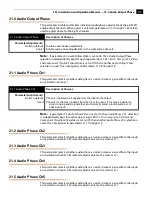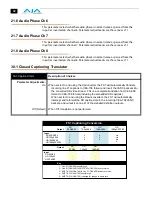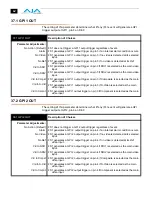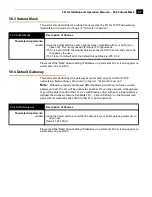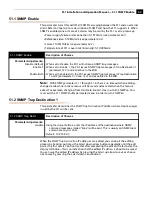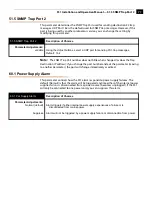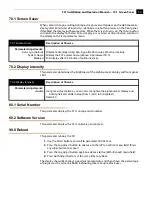
70
51.3 SNMP Trap Port 1
This parameter determines the
SNMP Trap Port
used for sending destination #1 trap
messages. UDP Port 162 is the default used for SNMP trap messages. However, if this
port is being used by another protocol or service, you can change the setting by
modifying this parameter.
Note:
The
SNMP Trap Port
number does not blink when changed (as does the Trap
Destination IP address); if you change the port number and exit the parameter
(moving to another parameter), the port will change immediately as edited.
51.4 SNMP Trap Destination 2
This parameter determines the secondary
SNMP Trap Destination
IP address where
trap messages issued by the FS1 will be sent (if desired).
When the
SNMP Trap Destination IP
addresses are edited, you can abort the editing
process by backing out (press the
Select
down arrow button repeatedly until the edit
passes the first octet). You’ll notice that after completing the edit on the last octet, the
display will blink—this is an indication that the edited IP address is about to be saved.
You can save the edited IP address by pressing the
Select
up arrow to save or choose
not to save by pressing the
Select
down
arrow button.
51.3 SNMP Trap Port 1
Description of Choices
Parameter Adjustments:
variable
Using the
Adjust
buttons, select a UDP port for sending FS1 trap messages.
Default:
162
51.4 SNMP Trap Dest 2
Description of Choices
Parameter Adjustments:
variable
Using the
Adjust
buttons, enter the IP address of the destination where SNMP
command messages (called “traps”) will be sent. This is usually an SNMP client
somewhere on your LAN.
Default:
192.168.0.3


